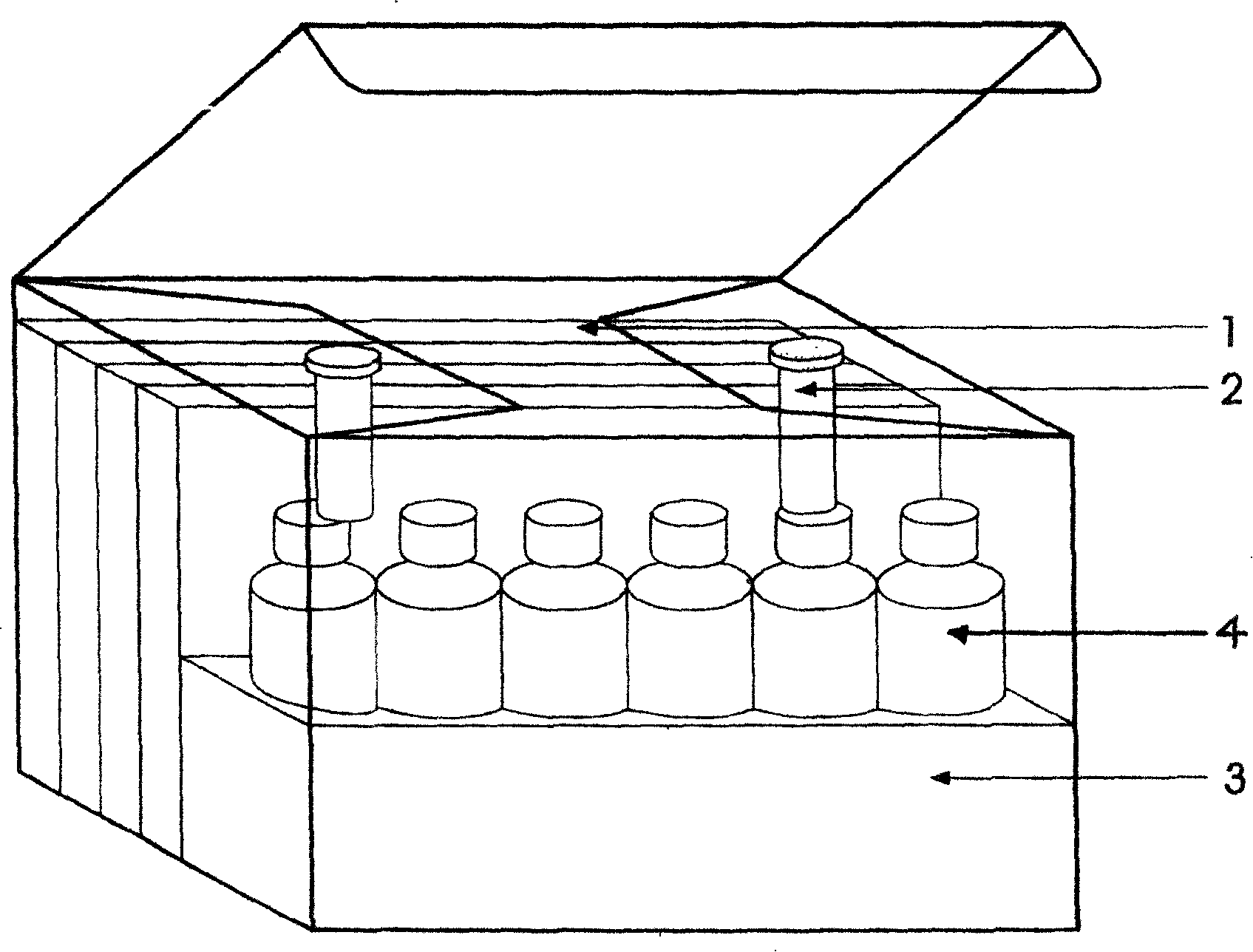Method and box for quick enzyme immunity detecting food-borne parasitic disease
A parasitic disease and detection method technology, applied in the direction of measuring devices, analysis by making materials undergo chemical reactions, instruments, etc., can solve problems such as parasite ovulation, economic loss, irregular ovulation, etc., and achieve a high degree of consistency and comparability, avoiding hazards and pollution, and eliminating potential safety hazards
- Summary
- Abstract
- Description
- Claims
- Application Information
AI Technical Summary
Problems solved by technology
Method used
Image
Examples
Embodiment 1
[0016] Example 1 Rapid enzyme immunoassay method for liver fluke disease
[0017] The soluble crude antigen of liver fluke was selected, and the purified antigen was purified step by step by the octanoic acid method and DEAE52 ion chromatography column chromatography, and the protein content was determined by the ultraviolet method; the preliminary test was carried out, and the contrast experiment with the other three antigens was determined and selected. Coating concentration of trematode refined antigen; dilute antigen with carbonate buffer (composed of sodium bicarbonate and sodium carbonate, pH9.60, 0.05M), coat 96-well polystyrene microwell plate, 100 microliters / well , overnight at room temperature, shake off the liquid in the well, and block with the same dose of 1% bovine serum albumin-containing phosphate buffer (composed of sodium dihydrogen phosphate and disodium hydrogen phosphate, pH7.0, 0.05M) at room temperature for 2 hours , Freeze and vacuum dry, put into plas...
Embodiment 2
[0022] Example 2 Rapid Enzyme Immunoassay Detection Method for Paragonimiasis
[0023] The soluble crude antigen of lung fluke was selected, and the purified antigen was purified step by step by octanoic acid method and DEAE52 ion chromatography column chromatography. Fluke refined antigen coating concentration; dilute antigen with carbonate buffer (composition as above, PH9.60, 0.05M), coat 96-well polystyrene microplate, 100 microliters / well, overnight at room temperature, shake off The liquid in the well was closed at room temperature for 2 hours with the same dose of phosphate buffer containing 1% bovine serum albumin (composition as above, PH7.0, 0.05M), freeze-dried in vacuum, bagged under vacuum conditions, and placed on the plate bag Label accordingly. The coated board can also be used directly after unpacking.
[0024] Other reagent preparation methods, assembly into boxes and detection schemes are the same as in Example 1.
Embodiment 3
[0025] Embodiment 3 swine cysticercosis rapid enzyme immunoassay method
[0026] The soluble crude antigen of porcine cyst fluid was selected, and the purified antigen was purified step by step by octanoic acid method and DEAE52 ion chromatography column chromatography, and the protein content was determined by ultraviolet method; the preliminary test was carried out, and the comparison experiment with the other three antigens was determined. And select the antigen coating concentration; dilute the antigen with carbonate buffer (composition as above, PH9.60, 0.05M), coat 96-well polystyrene microwell plate, 100 microliters / well, overnight at room temperature, shake off The liquid in the well was closed at room temperature for 2 hours with the same dose of phosphate buffer containing 1% bovine serum albumin (composition as above, PH7.0, 0.05M), freeze-dried in vacuum, bagged under vacuum conditions, and placed on the plate bag Label accordingly. The coated board can also be us...
PUM
| Property | Measurement | Unit |
|---|---|---|
| Sensitivity | aaaaa | aaaaa |
| Sensitivity | aaaaa | aaaaa |
Abstract
Description
Claims
Application Information
 Login to View More
Login to View More - R&D
- Intellectual Property
- Life Sciences
- Materials
- Tech Scout
- Unparalleled Data Quality
- Higher Quality Content
- 60% Fewer Hallucinations
Browse by: Latest US Patents, China's latest patents, Technical Efficacy Thesaurus, Application Domain, Technology Topic, Popular Technical Reports.
© 2025 PatSnap. All rights reserved.Legal|Privacy policy|Modern Slavery Act Transparency Statement|Sitemap|About US| Contact US: help@patsnap.com

